[ad_1]
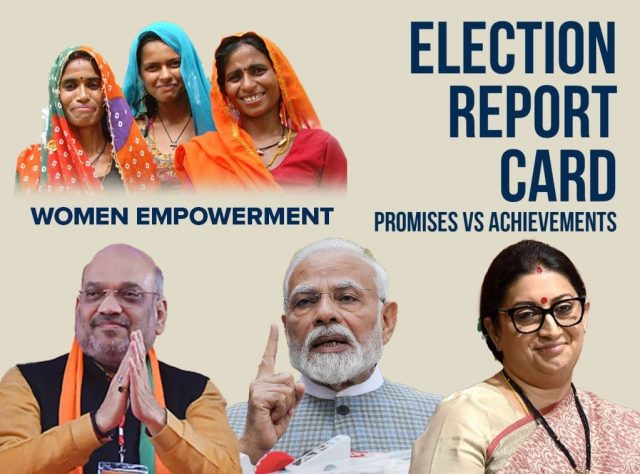
Election is a very important tool in democracy. It is through election that citizens of a nation choose their representatives and select their leaders. Political leaders represent different political parties which work for various goals.
In the general election held in 2014, the BJP-led NDA secured 282 seats and formed the government, making Narendra Modi the Prime Minister of India, while in the 2019 elections the number of seats went up to 303. The much-awaited Lok Sabha Elections 2024 commenced from 19th April, for which Prime Minister Narendra Modi has set a target of 370 seats for the ruling BJP and 400 seats for the NDA.
As we go through Lok Sabha Elections 2024 barely a month away, how to decide which political party you should cast your vote for? How to know how much work the party in power has done as against the tall claims that were made right before the previous elections?
The CSR Journal, which is known for its unbiased and fearless journalism delves into promises made versus task completed by the Bharatiya Janata Party (BJP), which is incumbent at the Centre under the leadership of Prime Minister Narendra Modi.
Following are certain promises made under the BJP’s manifesto ahead of the Lok Sabha Elections 2019. How much of the promises have been achieved in the past 5 years? Were the decisions made by the government beneficial for its people? Are citizens happy with what the government has to offer? What is the opposition saying? The CSR Journal takes a look.
BJP Manifesto – Lok Sabha 2019
Promises made by the Narendra Modi Government for: Women Empowerment
Women-led development
Ensuring Equal Rights
Ensuring a Dignified life for Women
Reservation for Women
Gender Inequality Index – Where does India stand?
The Gender Inequality Index 2022 has been released on the 13th March 2024 by the United Nations Development Programme (UNDP) in their Human Development Report 2023/2024. On the Gender Inequality Index (GII) 2022, India stands at rank 108 out of 193 countries with a score of 0.437. India stood at rank 122 out of 191 countries with a score of 0.490 in the Gender Inequality Index 2021.
In recent years, the government has implemented several programmes and policies aimed at improving women’s health, education, and economic opportunities. Indian women have achieved high positions in various fields, including politics, business, entrepreneurship and entertainment. Despite these achievements, women in India still face significant challenges. Gender discrimination, violence against women, lack of jobs and unequal pay continue to be major issues.
International Labour Organization’s (ILO) India Employment Report 2024 says young women in India are much more likely to not be in employment, education or training than young men. Female foeticide and infanticide, particularly in rural areas, remain a significant concern. Women’s safety and security is also being questioned especially with the memory of violence torn Manipur still fresh in our minds, where two women were allegedly gangraped and paraded naked on the streets followed by a group of men, some of whom can be seen groping the women as the latter begged for mercy.
Women led development
Government’s initiatives have spanned across women’s lifecycle including initiatives for girls’ education, skill development, entrepreneurship facilitation and safety in the workplace. Policies and legislations in these areas have been driving the Government’s ‘women-led development’ agenda.
Government schemes for women
The BJP Government in its 2019 Lok Sabha Election manifesto says they will ensure financial support to girl children through the Beti Bachao Beti Padhao scheme. At the same time, the Bharatiya Janata Party (BJP) promises to give a dignified life to women and ensuring access to basic resources through schemes like Swachh Bharat Abhiyan, Ujjwala scheme, Pradhan Mantri Awas Yojana and Saubhagya scheme.
Beti Bachao Beti Padhao
The Beti Bachao Beti Padhao scheme (Save the girl child, educate the girl child) of the Government of India aims to address declining Child Sex Ratio and related issues of empowerment of girls and women over a life cycle continuum. Launched in 2015 by PM Narendra Modi, the primary objectives of the scheme are, to prevent gender biased sex selective elimination, to ensure survival and protection of the girl child and to ensure education and participation of the girl child.
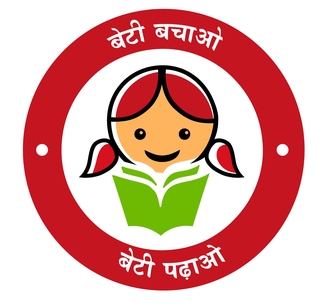
Consistent efforts are made under the scheme at all levels to generate awareness about the rights of girl child through community engagement, stop sex selection at birth and encourage positive action to support their education growth and development. The implementation of the Scheme is monitored by the task force under Beti Bachao Beti Padhao at District, State and National level.
Swachh Bharat Abhiyan (Swachh Bharat Mission)
Swachh Bharat Mission (Grameen) was launched on 2nd October, 2014 with the aim to achieve Open Defecation Free (ODF) status in all the villages of the country, by 2nd October, 2019 by providing access to toilets to all rural households. Swachh Bharat Mission (Grameen), there is a provision for incentive of Rs. 12,000/- for construction of Individual Household Latrine for all BPL (Below Poverty Line) households and identified APL households (SC/ST households, households with physically disabled person, landless labourers with homestead, small and marginal farmers and women headed households) who do not have toilets in their houses.
As per a government announcement, 11.33 Crore Individual Household Latrines have been constructed under Swachh Bharat Mission – Grameen since 2nd October, 2014 till 11th December, 2023.
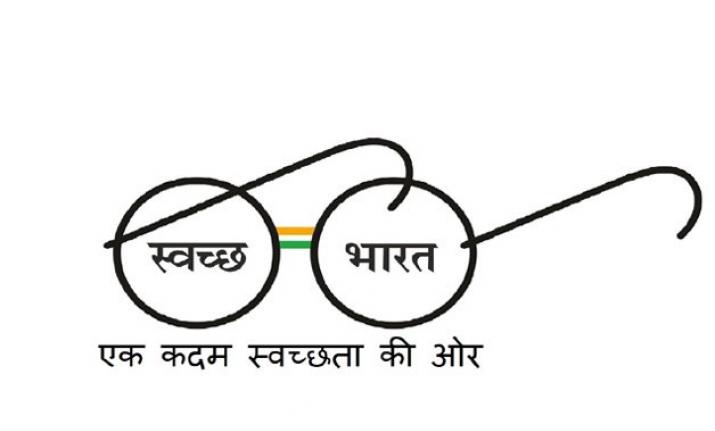
Swachh Bharat Mission-Urban, under the Ministry of Housing and Urban Affairs (MoHUA) was launched on October 2, 2014 with the objective of making urban areas of the country Open Defecation Free (ODF) and for scientific processing of Municipal Solid Waste (MSW) generated in the urban areas. To carry forward the progress made, Swachh Bharat Mission-Urban 2.0 was launched on October 1, 2021 for a period of five years. Under this, Central govt funds are released for construction of individual household latrines, community toilets/public toilets, used water management, solid waste management, information, education and communication & behaviour change and capacity building, skill development & knowledge management components.
Ujjwala scheme
Pradhan Mantri Ujjwala Yojana (PMUY) is a flagship scheme to make clean cooking fuel such as LPG available to the rural and deprived households which were otherwise using traditional cooking fuels such as firewood, coal, cow-dung cakes etc. The scheme was launched on 1st May 2016 by PM Narendra Modi to release deposit-free LPG connection in the name of adult woman member of poor households across the country.
Women belonging to any of the following categories – SC, ST, Pradhan Mantri Awas Yojana (Gramin), Most Backward Classes (MBC), Antyodaya Anna Yojana (AAY), Tea and Ex- Tea Garden tribes, Forest Dwellers, People residing in Islands and River Islands, enlisted under SECC Households (AHL TIN) or any Poor Household as per 14-point declaration are eligible for this scheme.
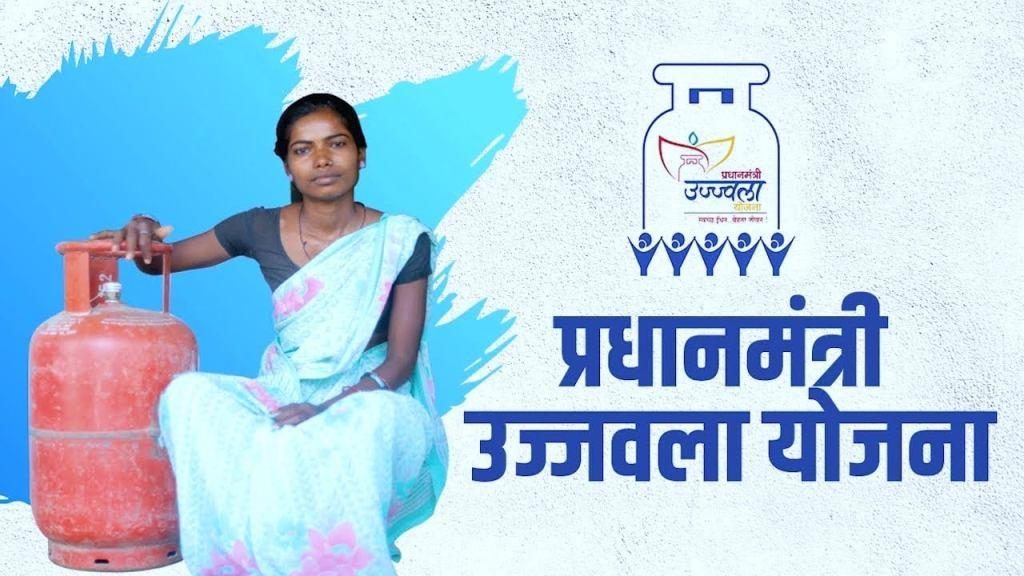
“The target to release 8 crore connections was achieved in September, 2019. To cover the remaining poor households, PMUY phase-2 (Ujjwala 2.0) was launched in August 2021 with a target to release 1 crore additional PMUY connections, which was achieved in January 2022. Subsequently, the Government decided to release 60 lakh more LPG connections under Ujjwala 2.0 and as on 01.01.2023, the target of 1.60 crore Ujjwala 2.0 connections has already been achieved. Under Ujjwala 2.0, a special provision has been made for migrant families who can use a self-declaration instead of Proof of Address and Ration Card to apply for a PMUY connection. A total of 5.43 lakh LPG connections have been released to migrant households under Ujjwala 2.0. As on 1st July 2023, there are about 9.59 crore PMUY beneficiaries,” according to Minister of State in the Ministry of Petroleum & Natural Gas, Rameswar Teli.
The Opposition Says
On International Women’s Day, the Government announced that it will reduce LPG cylinder prices by Rs. 100. The opposition parties have questioned the timing of this move, which is just ahead of the Lok Sabha Elections 2024.
In a statement, Congress General Secretary Randeep Surjewala said the Ujjwala scheme, with a gas cylinder costing Rs 888, has proven to be another “hollow gimmick” of the government which did not benefit the poor.
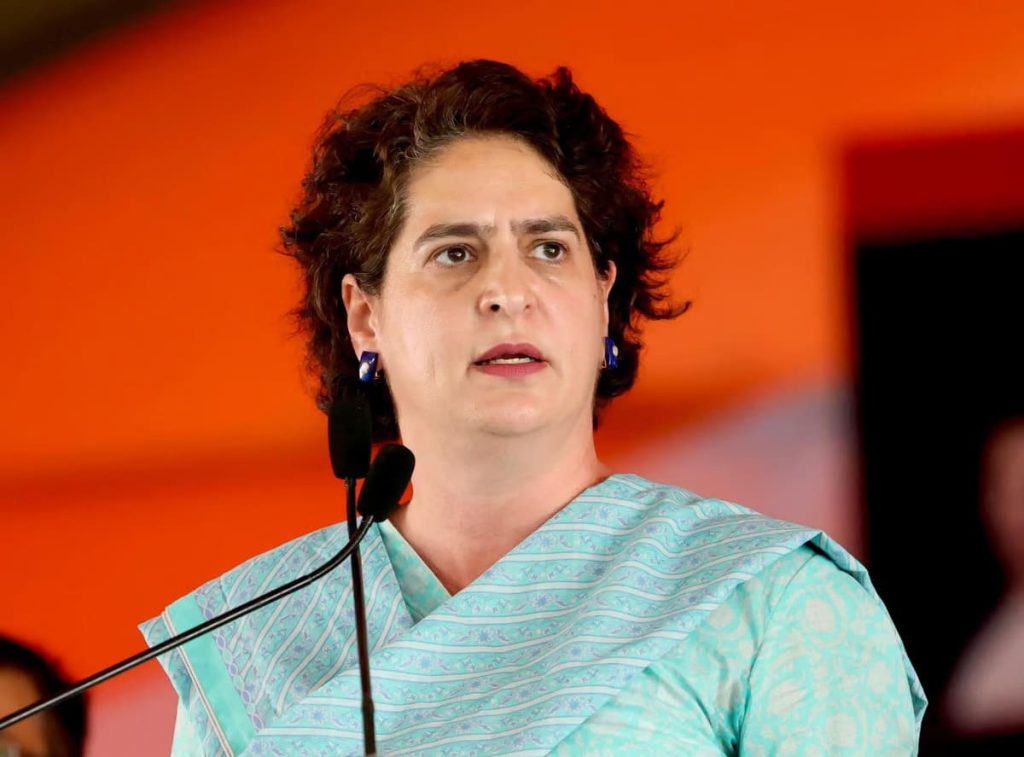
Congress General Secretary Priyanka Gandhi Vadra mentioned in a social media post, “Prime Minister please answer these questions: Why were gas cylinder prices doubled in the last seven years? Why did you increase the price of the gas cylinder by Rs 240 in a year of terrible economic crisis? Due to the rising prices of gas cylinders, about 90 per cent of the cylinders are lying in junk and people have been forced to cook using firewood. This cruel government has also ended the subsidy given to the poor on cylinders. Now gas is needed in the cylinder of the poor, not ‘jumla’ (false promise). Reduce prices.”
Talking to The CSR Journal about this step, Priyanka Chaturvedi, Member of Pariament – Rajya Sabha and Deputy Leader – Shiv Sena (UBT) said, “Cooking has cylinder prices have shot up from Rs 400 in the UPA regime to Rs 1200 in the present day. When the government appealed to the women of India to give up the subsidy they were enjoying on cylinder prices, they willingly gave up. But in the name of Ujjwala scheme, this government is only offering subsidy on the price of the first cylinder, from the next cylinder onwards, people have to pay Rs 600-700. So, after making the cooking gas cylinder so costly, if you are reducing the price only by Rs 100, then you are being unfair to this country’s citizens. This is the reason why I had called this step a jumla.”
“On top of this, this government has been unfair to this country’s citizens, especially to women. Women who used to save Rs 500 and Rs 1000 for reasons like daughter’s marriage or higher education children, or for an emergency situation like husband losing his job, you discontinued these notes overnight and made these women stand in queues to get these notes exchanged. Isn’t this harassment? ” she retorted.
Pradhan Mantri Awas Yojana
India has around 1.7 million homeless people, according to the 2011 Census. Even for those who have houses, the quality of the house, congestion, and inadequate amenities and infrastructure remain major concerns. In order to achieve the target of “Housing for All” in rural areas, the Ministry of Rural Development is implementing Pradhan Mantri Awas Yojana- Gramin from 1st April 2016 to provide assistance to eligible rural households with an overall target to construct 2.95 crore pucca houses with basic amenities by March, 2024.
Under the PM Awas Yojana, home buyers could save a maximum of Rs 2.67 lakh in interest cost over a period of 20 years (the maximum tenure for home loan allowed under the scheme). The maximum size of these affordable homes is 200 square metres.
The Centre is reportedly planning to widen the scope and size of its flagship scheme Pradhan Mantri Awas Yojana (PMAY). Now shopkeepers, traders and self-employed will also be brought under the ambit of the scheme, part of the ‘Housing for All’ mission of the central government, as per recent media reports.
BJP Govt’s promise of providing employment opportunities to women vs reality
The BJP Lok Sabha Election 2019 Manifesto or Sankalp Patra reads, “In the next 5 years, to ensure financial empowerment among women in rural and semi-rural ares, and create better employment opportunities for them, we will make every effort to ensure access to credit and other resources, capacity building, market and distribution network for women entrepreneurs, SHGs (Self-help Groups) and women farmers.”
Namo Drone Didi Scheme
To empower women in rural India, Prime Minister Narendra Modi announced the distribution of agricultural drones to girls in villages earlier this year. PM Modi unveiled the Namo Drone Didi Scheme in March 2024, through which 1,000 drones have been allocated to women’s self-help groups in villages. The initiative aims to challenge the traditional mindset that discourages women from driving even tractors, symbolizing a broader effort to economically and technologically empower women.
PM Modi emphasized that the selection process specifically targets women, underscoring the government’s commitment to fostering gender equality and rural development. According to the Prime Minister, these drones are poised to revolutionize agriculture and the role of women in villages.
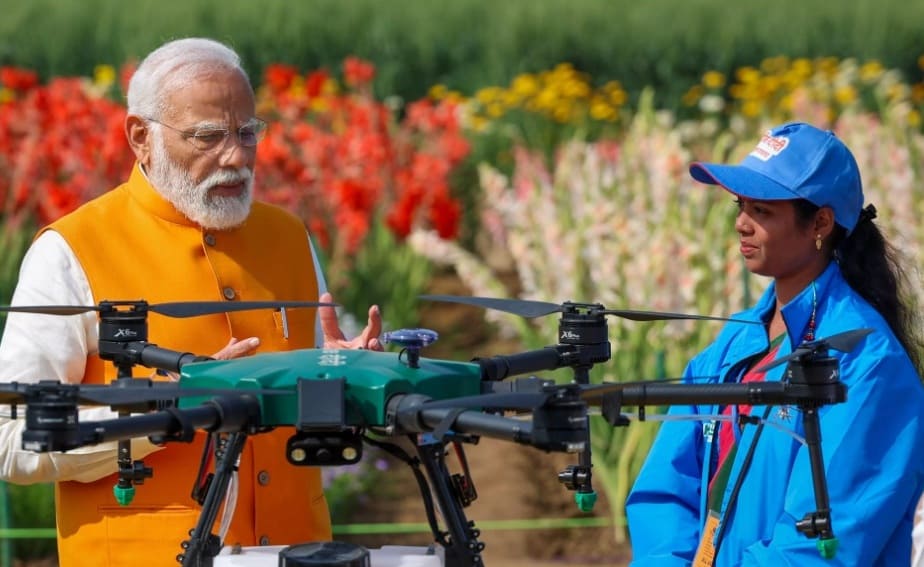
Under the initiative, rural women are trained to become drone pilots for agricultural purposes. The initiative aims to enhance economic empowerment and financial autonomy among women, especially in rural areas.
The initiative aims to equip 15,000 women-led Self-Help Groups (SHGs) with agricultural drones to assist in tasks such as crop monitoring, spraying fertilisers and sowing seeds. This will also provide additional income opportunities for many women.
Lakhpati Didi
Lakhpati Didi is an initiative of the Ministry of Rural Development that strives to empower women associated with Self-Help Groups. A Lakhpati Didi is a Self-Help Group member who earns an annual household income of Rupees One Lakh or more. This income is calculated for at least four agricultural seasons and/or business cycles, with an average monthly income exceeding Rs 10,000, so that it is sustainable.
Prime Minister Narendra Modi said in August last year that the Government is working with Women’s Self Help Groups (SHGs) with the aim of creating 2 crore ‘Lakhpati Didis’ in villages. The PM observed that 10 crore women are today associated with Women’s Self-Help Groups. “In villages today, one can find a Didi in the Bank, in the Anganwaadi and a Didi to provide medicines,” he said.
The PM also spoke about agri-tech and made a pitch for leveraging the potential of science and technology in rural development. The PM said that 15,000 Women’s Self-Help Groups would be given loan and training for operating and repairing drones.
While presenting the Interim Budget 2024-25 in Parliament on February 1 this year, Finance Minister Nirmala Sitharaman announced that it has been decided to enhance the target for Lakhpati Didi from 2 crore to 3 crore. The Finance Minister said that 83 lakh SHGs with nine crore women are transforming rural socio-economic landscape with empowerment and self-reliance. Their success has assisted nearly one crore women to become Lakhpati Didi already.
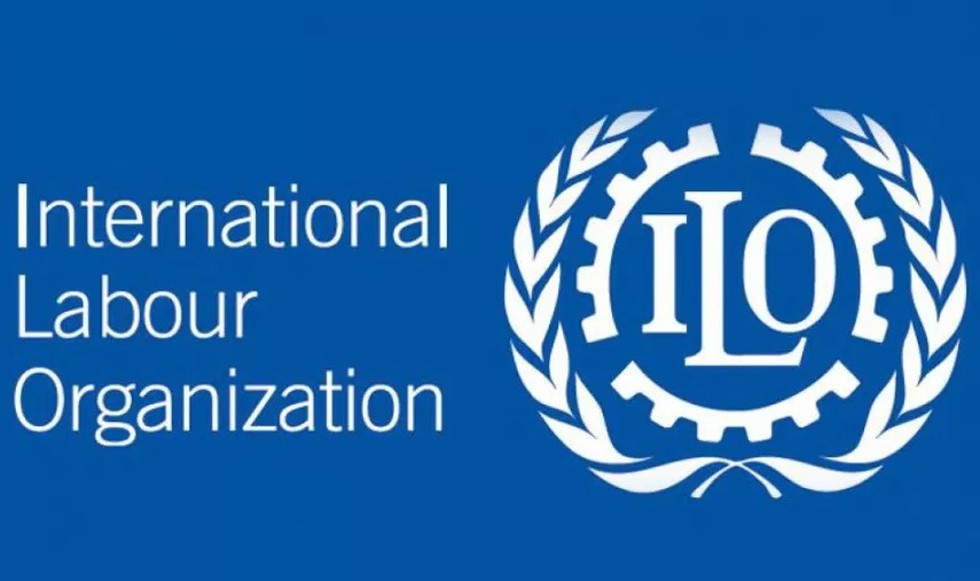
International Labour Organization’s (ILO) India Employment Report 2024
However, according to a report released by the International Labour Organization (ILO) in the last week of March, more than 80 percent of India’s unemployed workforce comprises its youth and the picture is even more appalling for women. ‘The India Employment Report 2024,’ jointly released by the ILO and the Institute of Human Development (IHD), said that the proportion of young individuals with secondary education or higher, among the total unemployed youth surged from 35.2 per cent in 2000 to 65.7 per cent in 2022.
The report has flagged concerns about poor employment conditions: the slow transition to non-farm employment has reversed; women largely account for the increase in self-employment and unpaid family work; youth employment is of poorer quality than employment for adults; wages and earnings are stagnant or declining.
“The youth unemployment rate increased more than twofold between 2000 and 2019, from 5.7 per cent to 17.5 per cent, but then decreased to 12.4 per cent in 2022… Young women were much more likely to not be in employment, education or training than young men, and this was especially pronounced among the older youths (aged 20–24 and 25–29) than the younger ones (aged 15–19) in 2022,” the report said.
Employment in India remained mostly self-employed and casual employment between 2000 and 2022, according to the report. Nearly 90 per cent of the workforce is engaged in informal employment. “Worse, there has been a rise in contractualisation, with only a small percentage of regular workers covered by long-term contracts,” it reads.
Ensuring Equal Rights
Ensuring overall development of women and promoting gender equality
Triple Talaq Law
Triple Talaq is the process of divorce under Sharia Law (Islamic law) where a husband can divorce his wife by pronouncing ‘Talaq’ three times. Triple Talaq Bill, also known as Muslim Women (Protection of Rights on Marriage) Bill, 2019, was passed by the Indian Parliament as a law on July 30, 2019, to make instant Triple Talaq a criminal offence. The Rajya Sabha passed the Bill, with 99 votes in its favour and 84 against it.
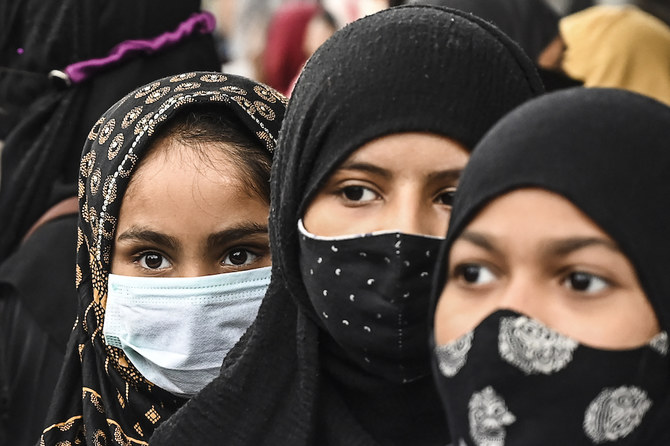
In a landmark ruling on 22nd August 2017, the Supreme Court of India declared Triple Talaq unconstitutional, stating that it violated the fundamental rights of Muslim women. The practice allowed Muslim men to divorce their wives by uttering the word “talaq” three times rapidly, without the wife’s consent. The court observed that this violates the fundamental rights of Muslim women and is opposed to principles of equality, dignity, and individual rights.
This unilateral and arbitrary nature of the practice undermines the principles of equality, dignity, and individual rights, which are the cornerstones of the Indian Constitution. As a result, the court concluded that Triple Talaq is incompatible with these fundamental rights and therefore unconstitutional.
The apex court established a legal prohibition on Triple Talaq, with the enactment of the Muslim Women (Protection of Rights on Marriage) Act in 2019. This act rendered Triple Talaq illegal in India with effect from 1st August, 2019. Any form of instant Triple Talaq, whether spoken, written, or communicated virtually/digitally was declared void and unlawful and considered a non-bailable offence.
Amid the ongoing Lok Sabha Elections, addressing a rally in Aligarh in April this year, PM Modi took a jibe at opposition highlighting what he has done to improve the lives of Muslim women. “Parties like the Congress and Samajwadi Party always practised politics of appeasement but never did anything for the political, social and economic uplift of Muslims. The lives of many daughters, who were victims of triple talaq, were ruined. Due to this, the whole family would face problems. Modi has secured their lives by making a law against triple talaq,” the Prime Minister said.
An X (Twitter) post by All India Majlis-e-Ittehadul Muslimeen (AIMIM) chief Asaduddin Owaisi reads, “Modi ji has said that there is a ban on triple talaq. Why is Modi ji getting his inspiration from Pakistani law? He even made a law against triple talaq here, but it did not make any difference at the ground level. Rather, the exploitation of women has increased further. We have always been demanding that social reform will not happen through laws. If a law has to be made, then it should be made against those men who flee from their marriages.”
In an article for India Today, Nazima Parveen writes, “I conducted ethnographic fieldwork in Delhi and Hyderabad for a research project on the sociological impacts of the Triple Talaaq Law. The preliminary findings of the study, I believe, are useful to make sense of the emerging form of patriarchy among Sunni Muslims in India. More specifically, I wish to highlight two crucial findings: the problems of getting FIR registered in TTL cases and abandonment of wives without talaq by Muslim men.”
Ensuring a dignified life for women
Mission Shakti
The Government of India implements ‘Mission Shakti’ – an integrated women empowerment programme as the umbrella scheme for the safety, security and empowerment of women for implementation during the 15th Finance Commission period across the country. It seeks to realise the Government’s commitment for ‘women-led development’ by addressing issues affecting women on a life-cycle continuum basis and making them equal partners in nation-building through convergence and citizen-ownership. It also focuses on strategies for improving convergence across Ministries/ Departments and at different levels of governance.
‘Mission Shakti’ comprises of two sub-schemes ‘Sambal’ and ‘Samarthya’ for safety and security of women and empowerment of women respectively. The schemes of One Stop Centres, Women Helplines (181-WHL), Beti Bachao Beti Padhao and Nari Adalat are part of ‘Sambal’ sub- scheme; while the components of Pradhan Mantri Matru Vandana Yojana (PMMVY), Palna, Shakti Sadan, Sakhi Niwas and Hub for Empowerment of Women are part of ‘Samarthya’ sub scheme.
Pradhan Mantri Matru Vandana scheme
Pradhan Mantri Matru Vandana Yojana (PMVVY) provides universal coverage to pregnant and lactating mothers for direct cash benefits of Rs. 5000 for one child with an aim to promote heath seeking behaviour and for partial compensation of wage losses during the period of pregnancy and motherhood. Under Mission Shakti, the Government has decided to extend the benefit for 2nd child if it is girl child with a higher financial assistance of Rs. 6000.
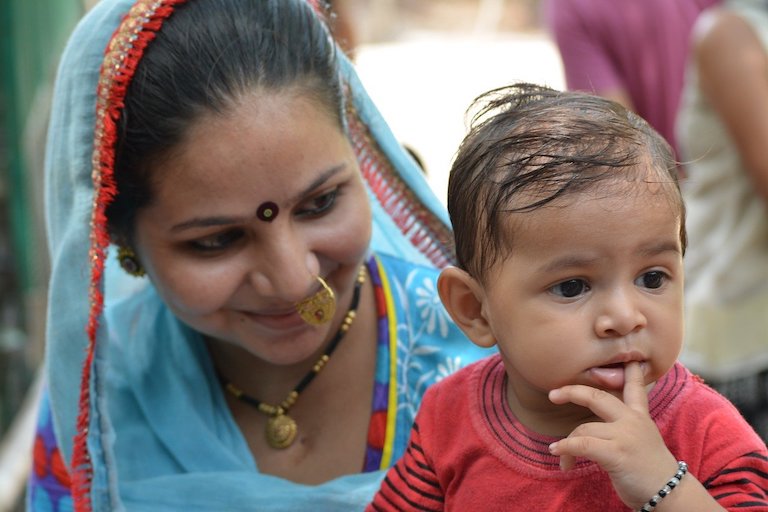
The primary objective of Pradhan Mantri Matru Vandana Yojana launched on 1st January 2017 and revised and incorporated as a component of Mission Shakti from 1st April 2022, as PMMVY 2.0 is to provide cash incentive for partial compensation of the wage loss during pregnancy so that women can take adequate rest before and after delivery of the child; and to improve health seeking behaviour amongst the Pregnant Women & Lactating Mothers. The PMMVY Portal and Mobile App are aimed at delivering technical excellence, prioritizing a citizen-friendly experience ensuring smooth fund transfers through Direct Benefit Transfer.
Ayushman Bharat
Ayushman Bharat, also known as the Pradhan Mantri Jan Arogya Yojana (PMJAY), is a flagship health insurance scheme launched by the Government of India. It aims to provide health coverage to economically vulnerable sections of society by offering financial protection against catastrophic health expenses. The scheme primarily targets the poor, deprived rural families, and identified occupational categories of urban workers’ families. Under Ayushman Bharat, eligible beneficiaries receive health coverage of up to Rs. 5 lakh per family per year for secondary and tertiary care hospitalisation.
One of the key components of Ayushman Bharat is the creation of Health and Wellness Centres (HWCs) to provide comprehensive primary healthcare services. These centres serve as the first point of contact for healthcare needs, offering a range of services from preventive to promotive healthcare. Overall, Ayushman Bharat aims to make healthcare more accessible and affordable for millions of Indians, reducing the financial burden of healthcare expenses and improving health outcomes across the nation. The Ayushman Bharat health insurance scheme has been a significant initiative to provide medical insurance to nearly 107.4 million poor families in India.
POSHAN scheme
POSHAN Abhiyaan or POSHAN Scheme was launched on 8th March 2018 with an aim to achieve improvement in nutritional status of Adolescent Girls, Pregnant Women and Lactating Mothers in a time bound manner by adopting a synergised and result oriented approach. The efforts under the Supplementary Nutrition Programme of Anganwadi Services and POSHAN Abhiyaan have been aligned under ‘Saksham Anganwadi and POSHAN 2.0’ (Mission Poshan 2.0), which is an integrated nutrition support programme. It seeks to address the challenges of malnutrition in children, adolescent girls, pregnant women and lactating mothers through a strategic shift in nutrition content and delivery and by creation of a convergent ecosystem to develop and promote practices that nurture health, wellness and immunity.

Poshan 2.0 focuses on Maternal Nutrition, Infant and Young Child Feeding Norms, Treatment of MAM/SAM and Wellness through AYUSH. Time-tested traditional wisdom in community nutritional practices is leveraged under Poshan 2.0 to focus on prevention of diseases and promotion of wellness through Yoga, cultivation of medicinal herbs in Poshan Vatikas, and use of AYUSH formulations to address conditions like anemia. Under Mission Poshan 2.0, fortified rice is being allocated for Supplementary Nutrition and focus is on millets and locally available nutritious food for ensuring adequate nutrition. Region-wise diet charts have been developed for pregnant women, viz., North, North-East, West, South, East and Central.
Further, Scheme for Adolescent Girls under Mission Poshan 2.0 has been revised to focus on Adolescent Girls in the age bracket 14-18 years of age in North East and Aspirational Districts to adopt a lifecycle approach to malnutrition.
Reservation for women – Women’s Reservation Bill
In 2023, the PM Modi-led BJP government successfully enacted the long pending Constitution (One Hundred and Twenty-eighth Amendment) Bill, 2023 a.k.a Women’s Reservation Bill 2023 a.k.a Nari Shakti Vandan Adhiniyam which ensures 33 per cent seats for women in the Lok Sabha (lower house of Parliament) and State Legislative Assemblies. It will be implemented after the delimitation of seats and upcoming census which is expected on or after 2026.
Women presently make up for nearly half of India’s 95 crore registered voters but comprise almost 15 per cent of lawmakers in Parliament and 10 per cent in the state assemblies. “While that represents India’s highest proportion since its independence, it was far below the global average of 26.5 per cent, or the Central and Southern Asia average of 19 per cent,” says the United Nations (UN).
Implementation of Women’s Reservation Bill
Despite the unanimous support given to the legislation, the Central Government has not been able to provide a specific timeline for its implementation. Since being passed in the Lok Sabha, several political parties, including veteran Congress leader Sonia Gandhi and Aama Aadmi party leader Atishi have demanded immediate implementation of the Women’s Reservation Bill 2023 bill, starting with the 2024 Lok Sabha Elections. Sonia Gandhi has also demanded OBC reservation in the women quota. “In this bill, reservations for backward, Dalit, minority, and tribal (PDA) women should be clearly stated in definite percentage form,” Samajwadi Party chief Akhilesh Yadav said.
However, BJP has said that immediate implementation of the bill is not possible. As per reports, the Women’s Reservation Bill 2023 cannot be immediately implemented because the Indian Government needs to bring into consideration a fresh census and delimitation exercise (where seats in the Lok Sabha are to be reallocated based on the results of the next Census), in order to avoid a legal challenge. The last census data is of 2011 and the last delimitation was done even before that. The 2021 census was delayed due to the Covid-19 pandemic. The proposed legislation will come into effect after the next delimitation exercise, which might be conducted after the first census to be taken after 2026. Union Home Minister Amit Shah said on Wednesday that irrespective of the Opposition’s support, the women’s reservation Bill will be implemented only after 2029.
The opposition has criticised delayed implementation of the bill. Delhi Education Minister and Aam Aadmi Party leader Atishi said the bill was to fool women voters ahead of the 2024 Lok Sabha elections, while the Congress said women would not get the benefits of the proposed legislation anytime soon.
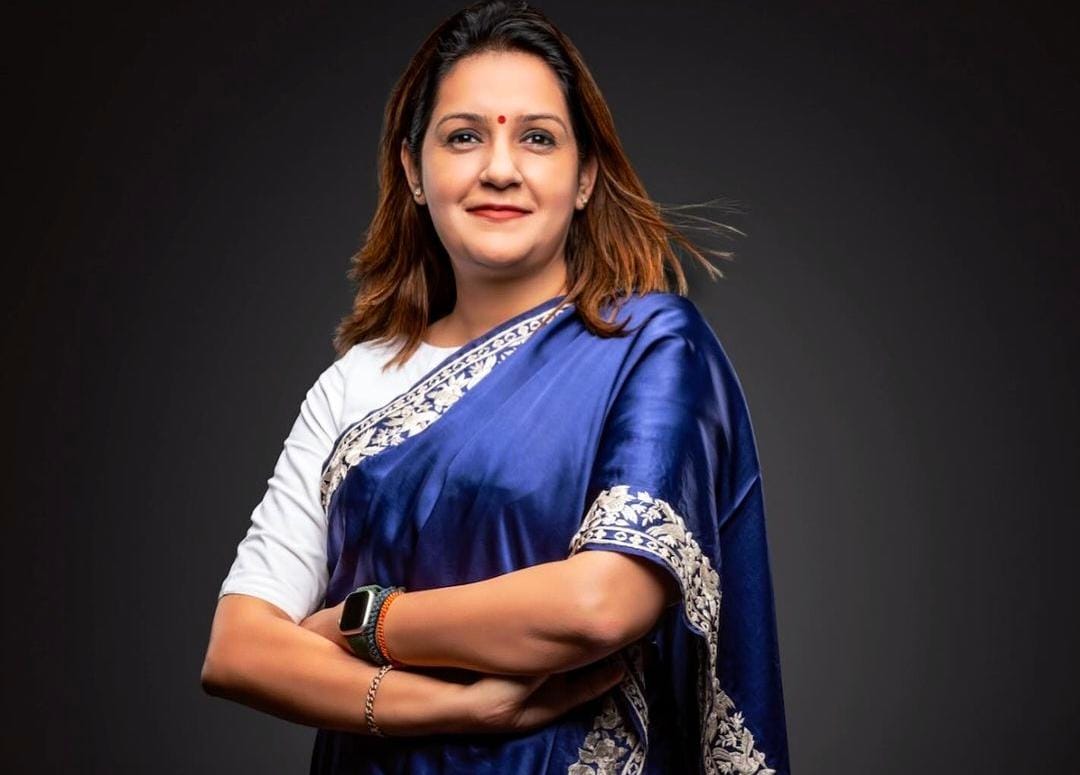
In an exclusive interview with The CSR Journal, Priyanka Chaturvedi, Member of Pariament – Rajya Sabha and Deputy Leader – Shiv Sena (UBT) expressed her concern about the implementation of Women’s Reservation Bill. Priyanka said, “Women’s Reservation Bill is something for which we all have shown our support. But it is awaiting conditions like the next Census and delimitation, means it is not happening before 2029. And delimitation is a problem. Case has been filed in the Supreme Court by Southern Indian states challenging delimitation. Has this happened anywhere else in the world that a bill has been passed and yet there is no implementation of the same? So, the work done by this government is nothing beneficial for women.”
Women’s safety and security – Are Indian women safe?
However, safety and well-being of women in the present day India continue to be a serious concern. The National Crime Records Bureau (NCRB) data reveals a 4.45 lakh (4,45,256) cases of crime against women in 2022, which can mean roughly 51 FIRs being filed every hour.
The majority of crimes against women under the Indian Penal Code were of cruelty by husband or his relatives (31.4 per cent) followed by kidnapping and abduction of women (19.2 per cent), assault on women with intent to outrage her modesty (18.7 per cent), and rape (7.1 per cent), the NCRB stated.
This marks a significant increase from 2021, which recorded 4,28,278 cases, and 2020, which reported 3,71,503 cases. The NCRB report highlights that 12 states and Union Territories recorded crime rates higher than the national average, with Delhi, Haryana, and Telangana topping the chart.
Uttar Pradesh (65,743) registered the maximum FIRs in cases of crimes against women in 2022, followed by Maharashtra (45,331), Rajasthan (45,058), West Bengal (34,738), and Madhya Pradesh (32,765). These five states together contributed to 2,23,635 (or 50.2 per cent) of the total cases lodged in India last year, according to the NCRB.
The Congress has accused Prime Minister Narendra Modi of ‘failing’ women, farmers and youth. In March this year, Congress General Secretary Jairam Ramesh said, “Publicly, PM Modi loves talking about women’s empowerment and ‘Nari Shakti’ but he has repeatedly failed Indian women, even within his own party. Just two weeks ago, the BJP Mahila Morcha’s National Vice President quit the party, citing that female female party workers were being ‘insulted’ and ‘treated harshly’. Another female leader, President of the Mahila Morcha in UP’s Moradabad, was physically assaulted by local leaders and forced to turn to social media to demand justice.”
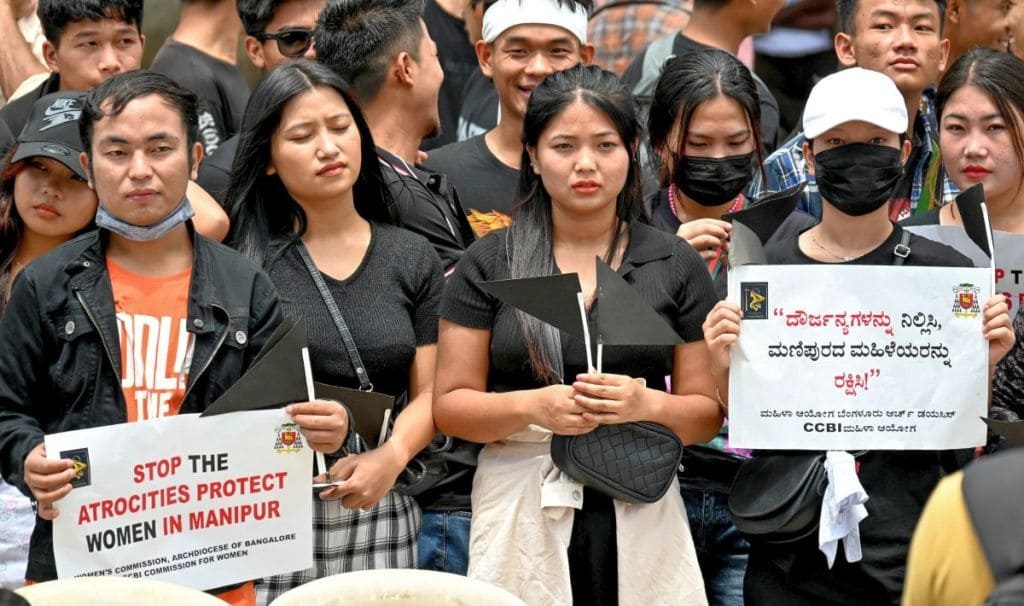
Situation of women Manipur
In May last year, amid ethnic violence between the Meitei and Kuki communities, a video from Manipur went viral on social media. The video showed two women being paraded naked by a crowd, some of them groping the women. The women were also allegedly gang-raped brutally. The issue led to a nationwide discussion around the disturbing status of women’s safety in India. Responding to questions from a television news channel, Manipur Chief Minister N. Biren Singh acknowledged that there had been “hundreds of such cases”.
Did the BJP Government FAIL India’s Female Wrestlers?
In January 2023, Indian wrestlers began protesting for investigation into allegations of sexual harassment of female wrestlers by BJP MP Brij Bhushan Sharan Singh during his tenure as the president of the Wrestling Federation of India.
Indian wrestlers, including Olympic medalists, Vinesh Phogat, Sakshi Malik, Anshu Malik, Bajrang Punia, among others, staged a sit-in accusing Wrestling Federation of India president, Brij Bhushan Sharan Singh and its coaches of sexually harassing female players for years.
The protests were called off in January 2023 due to the government’s promise of creating an oversight committee to investigate the allegations. The protesting wrestlers resumed their protests in April 2023, citing inaction by authorities.
Demanding sexual favours in lieu of professional assistance, incidents of sexual harassment that include inappropriate touching, molestation, running hands over breasts, touching the navel; several instances of intimidation including stalking form the key allegations in two FIRs filed with the Delhi Police on April 28, 2023 against Wrestling Federation of India chief and BJP MP Brij Bhushan Singh.
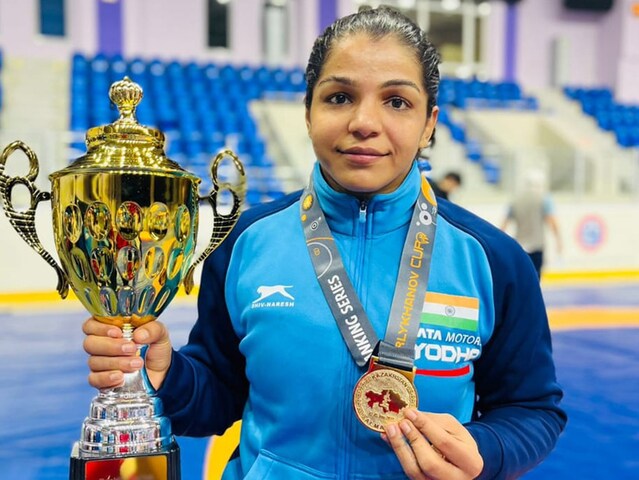
India’s only woman wrestler to win Olympics medal Sakshi Malik, quit sports in protest after Brij Bhushan Sharan Singh’s loyalist, Sanjay Kumar Singh, got elected as the new president of the Wrestling Federation of India on 21st December 2023.
Rubbing salt in the protesting wrestlers’ wound, the BJP has given Lok Sabha ticket from Kaiserganj in Uttar Pradesh to Brij Bhushan Singh’s son Karan Bhushan Singh. Indian wrestlers and Olympic medalists Sakshi Malik and Bajrang Punia have reacted sharply to the BJP’s decision.
However, Finance minister Nirmala Sitharaman has defended the Bharatiya Janata Party’s decision saying, “How many people are there whose fathers, mothers or uncles have been accused of serious crimes, but they have still got tickets? All parties do it. Even children of people who have been convicted get tickets. And here nothing is proven against Brij Bhushan yet. If it was, you could have asked us why. How can we decide on our own that he is doshi (guilty)?”.
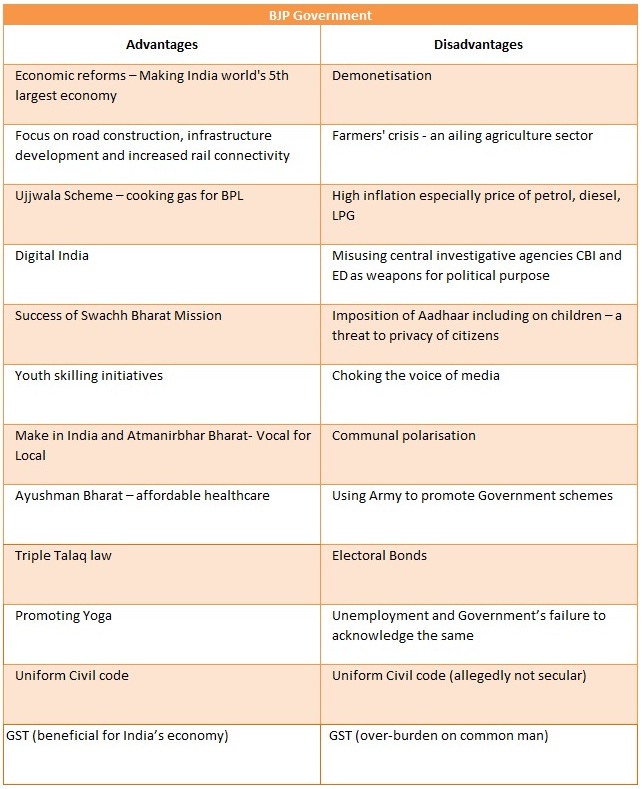
The CSR Journal
[ad_2]
Source link
Modified by Maaaty at MPI News
